The roofing industry continues to grow as more construction work becomes complicated. As more advancement takes place in the roofing industry, a lot of tools have become absolutely important in order to meet the ever-challenging needs of the industry. Here is a compiled list of the tools you need for roofing installation, replacement and repair. Keep in mind, if you have a metal or specialty roof, repairs and installation will require different tools and some expertise to do it correctly. While these can be done yourself, we would recommend contacting a professional, at least for guidance while you take on this project. Discussed below are different types of roofing tools used across projects.
Roofing nail guns
Roofing nail guns make installing shingles much more manageable. These roofing tools, which are powered by an air compressor and typically hold up to nails, function similarly to other nailers with a trigger-operated mechanism that fires the nails through the roofing material. With their ability to fire more than 100 nails per minute, these powerful tools dramatically shorten the time it takes to complete a roofing job. Roofing nailers are quality tools for asphalt and fiberglass shingles, waterproof tar paper, new roofs, re-roofing and insulation board.
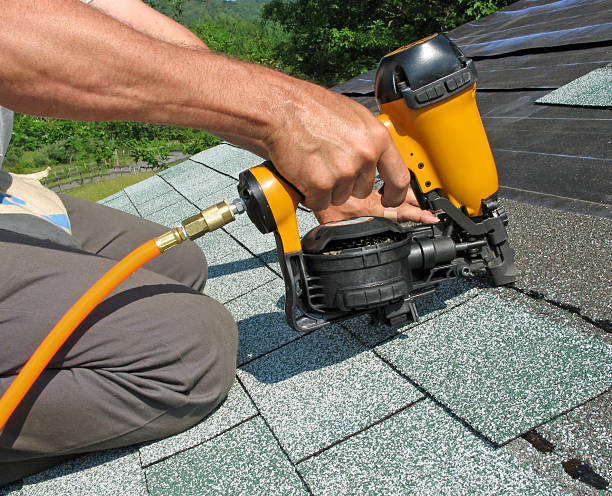
Heat guns
Heat guns are ideal for plastic welding, shrinking and forming thermoplastics, as well as for drying paint, varnish and much more. Thanks to their powerful hot air blower, as well as various nozzles and attachments, Leister’s professional hand tools are always reliable, even under difficult conditions and for demanding work. It comprises a source of heat, usually an electrically heated element or a propane/liquified petroleum gas, a mechanism to move the hot air such as an electric fan, unless gas pressure is sufficient; a nozzle to direct the air, which may be a simple tube pointing in one direction, or specially shaped for purposes
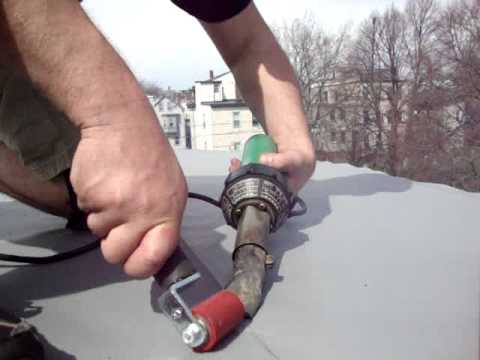
Hammer tacker staplers
A Hammer staplers are used for securing a variety of thin plastic and paper sheet building materials against flat surfaces by tacking a staple using a high velocity slapping motion similar to that of swinging a hammer. Typically the shallower the staple, the better hold its grip on the surface is. Also known as a slap stapler or slapper, it is most commonly used for the application of housewrap as well as some paper building materials which is installed by slap stapling the material onto plywood sheathing prior to siding installation during residential and commercial new build construction. Another common use is for securing insulation batts in between studs and joists as opposed to using insulation rods. Hammer staplers are somewhat similar to staple guns but without the need to squeeze a trigger in order to use the tool for its intended purpose.
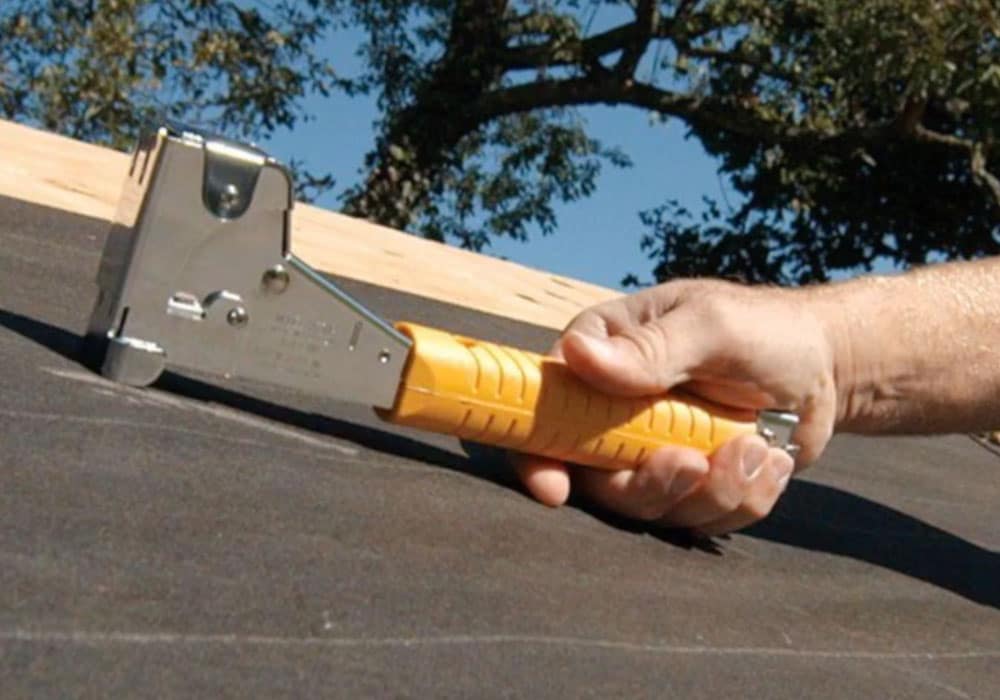
Roofing hammers
Roofing hammers are used for laying shingles. They typically have a blade at one end of the head, which is used for cutting shingles and include a built-in shingle gauge. These are e specialized tools intended to help residential roofers cut shingles and drive nails into them. They have unique features to make this job more efficient, such as magnetized faces to help you pick up a stray nail and even gauges that help you position shingles with the right exposure. There are two main types of roofing hammers. The first is the hatchet style, this style is the older of the two. What makes it unique is that it has a hatchet type blade on one end of the head and a hammer on the other end of the head. It’s like a hatchet and hammer combined. The second type is the more advanced modern style. This style includes a blade on one end of the hammerhead similar to the hatchet style, but the main difference between the two is that the blade can be replaceable.
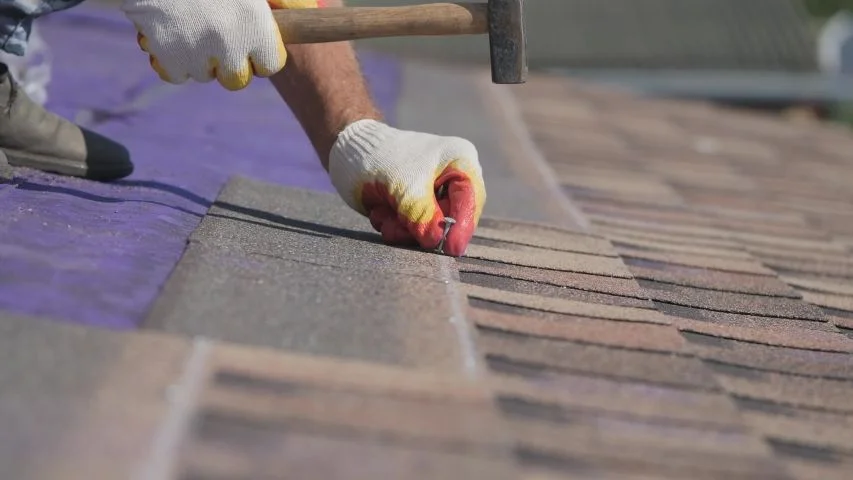
Roofing blade
Roofing blade is specially designed with an extra long handle to keep knuckles clear and safe while cutting roofing shingles. The bulging grip design keeps the knife from slipping out of the hand and comes with a wide lanyard hole for easy carrying.
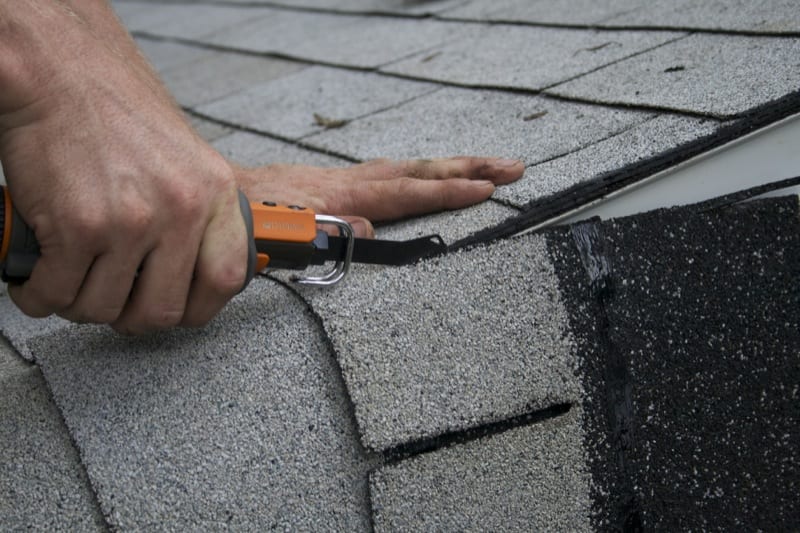
Roofing shovels
Roofing shovels are used for removing old shingles. It has a piece welded onto the back of the shovel that lets you use it like a pry bar to pop up old nails and stuck on shingles with a breeze.
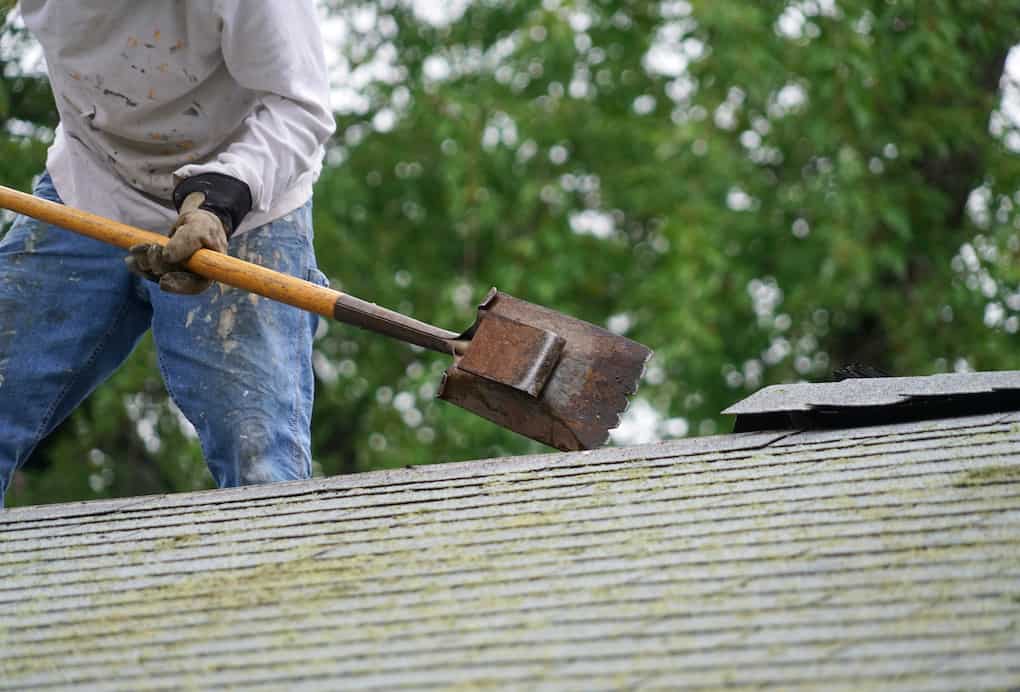
Roofing scoop shovels
A roofers shovel is designed to help roofers remove roofing shingles in a quick easy manner. Roofing scoop shovels are broad with a wide flair and square or rounded tip for scooping and moving large amounts of roofing material. There are many benefits to using a roofing shovel over other methods. First of all, it can be used with one hand while the other is holding onto an anchor point for safety. This lets you tear up more area at once than if you had two hands on another tool like a crowbar. Second, larger sections of material will come up with one pull of the shovel, which saves you time and energy over other methods.
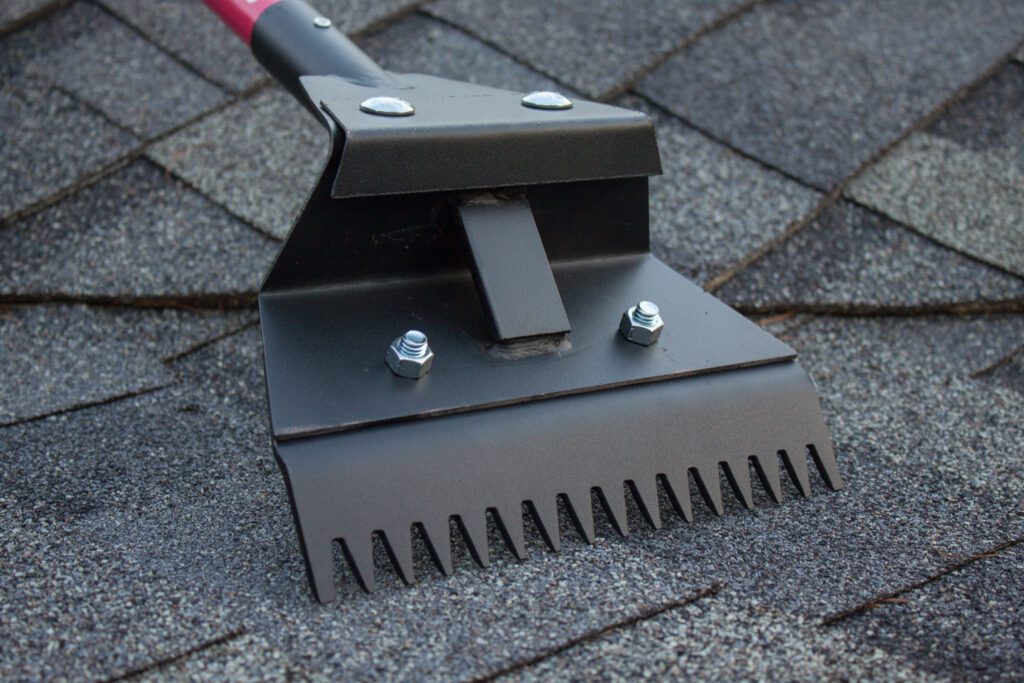
Pry bars
Pry bars are hand tools used to pull two objects apart. Their angled, flattened end acts as a lever, allowing you to apply a significant amount of force between objects. Generally constructed of steel, these durable, reliable, and multi-purposed bars are often the right tool for any construction job. There are many types of pry bars, all of which come in various shapes and sizes. Each pry bar serves its own purpose, so it’s important to know which one suits your needs best.
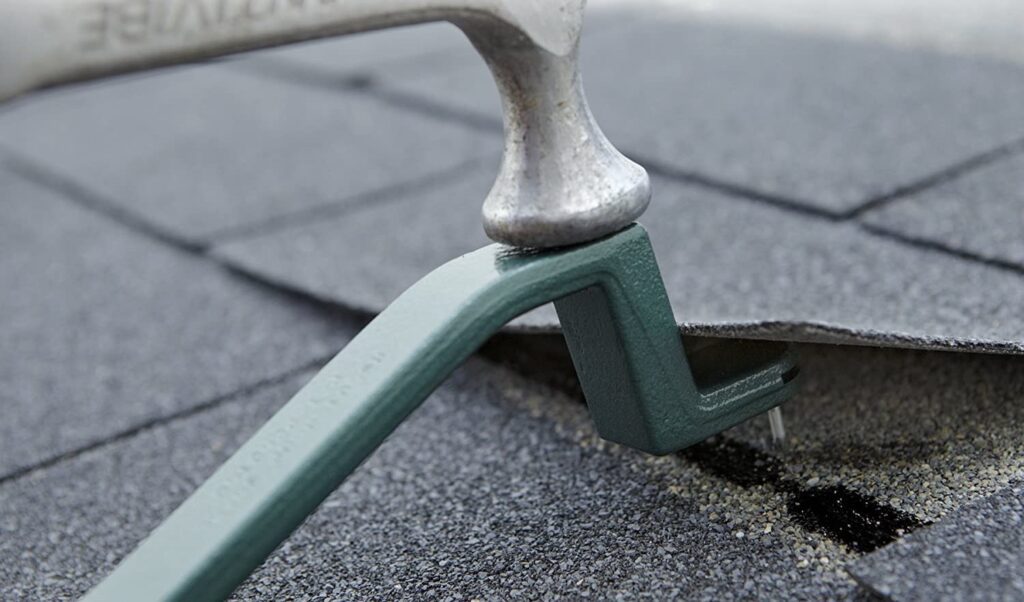
Chalk line tools
A chalk line or also known as a chalk box is a simple hand tools that consist of a box filled with chalk powder with a reel of string inside it. The chalk lines are a tool for marking long, straight lines over distances onto the surface of an object to provide accurate guides where using a ruler or straight edge tool would be impractical. On the end of the chalk powdered string is a metal hook which can be attached to an object at one end and then reeled out across the surface and pulled tautly. Chalk lines are commonly used to mark out lines between two points and are used when the straight line required is longer than can be practically marked by hand using a straight edge. They’re taut strings coated with loose, coloured chalk. The string is drawn across a flat surface between two points and tightened. When the string is plucked it sharply rebounds against the surface and its powdery chalk coating is transferred onto the surface along the line where it struck.

Caulk guns
Caulk guns are devices that help people use caulk, a type of sealant, effectively. Caulk is a substance used to seal and adhere, such as closing a gap or crack between a window frame and jamb, or a sink and a vanity. Most any space can be sealed using a caulk and a caulk gun. Caulk can be used on its own, but a caulk gun helps significantly. In this guide we’ll show you how to use a caulk gun. A caulk gun is an item that takes the hard work out of caulking. Because of the way the sealant gun is built, you simply place the caulk into the gun and, using the hand trigger to apply pressure, the device delivers a stream of sealant to the designated area. There are two types of caulk gun rods, the ratchet rod and the smooth rod.
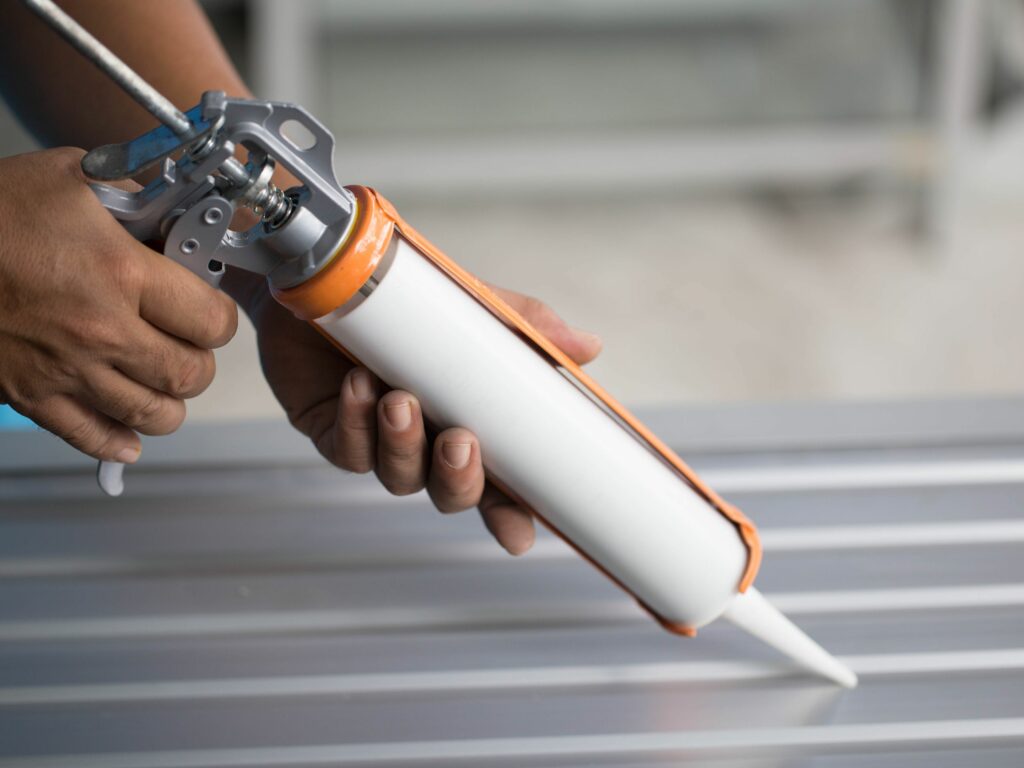
Tin Snips
Tin snips or compound snips, are the best hand tools for cutting sheets of metal. Cutting in a straight line with tin snips is easy. It’s making curved cuts that can be difficult, especially if you’re holding the wrong tool. Tin snip grips are typically colored red, yellow, or green, and it’s not for cosmetic reasons. Each colour signifies a different direction that the snips are made to cut.
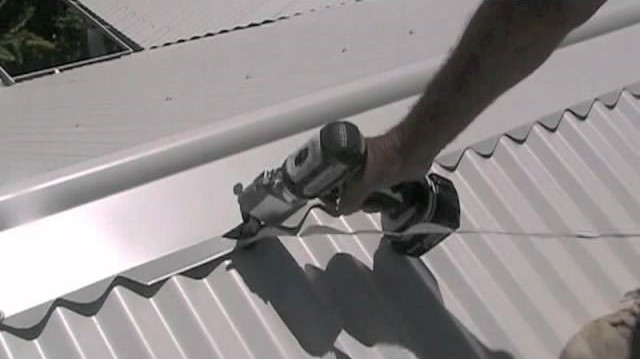
Reciprocating saw and circular saw
Reciprocating saws feature flat knife-like blades that can cut through a variety of materials, including wood, metal, PVC, and wood embedded with nails. These blades are typically cheap and disposable and are not intended for precision cutting.
Circular saw blades are disc-shaped blades built for precision cutting. Unlike reciprocating saw blades, these blades are typically designed for cutting a specific material and aren’t made for rough-cutting.
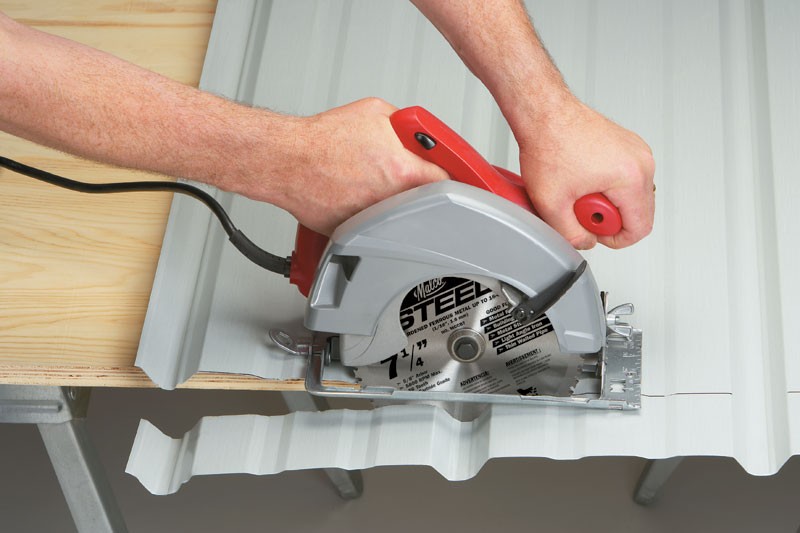
Sawhorses
A saw-horse or sawhorse (saw-buck, trestle, buck) is a beam with four legs used to support a board or plank for sawing. A pair of sawhorses can support a plank, forming a scaffold. In certain circles, it is also known as a mule and a short sawhorse is known as a pony. The names come from the shape of the frame, which resembles a horse. A sawhorse may also be a rack for supporting logs for sawing, known in the US as a sawbuck. The sawhorse may be designed to fold for storage. A sawhorse with a wide top is particularly useful to support a board for sawing or as a field workbench, and is more useful as a single, but also more difficult to store.
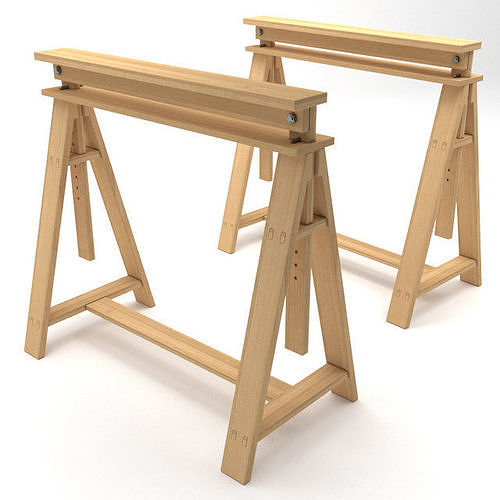
Ladder Hoist
A ladder hoist is a device used to lift heavy objects on a platform mounted to a ladder, which is usually made of aluminium. Roofers and other labourers who commonly work on roofs or other high places will use the ladder hoist to safely transport heavy items which would otherwise need to be hauled up the ladder by hand. The hoist itself is usually motorised for further convenience and safety, though added weight to the ladder system. These machines are usually quite compact, making them easy to transport to different job sites.
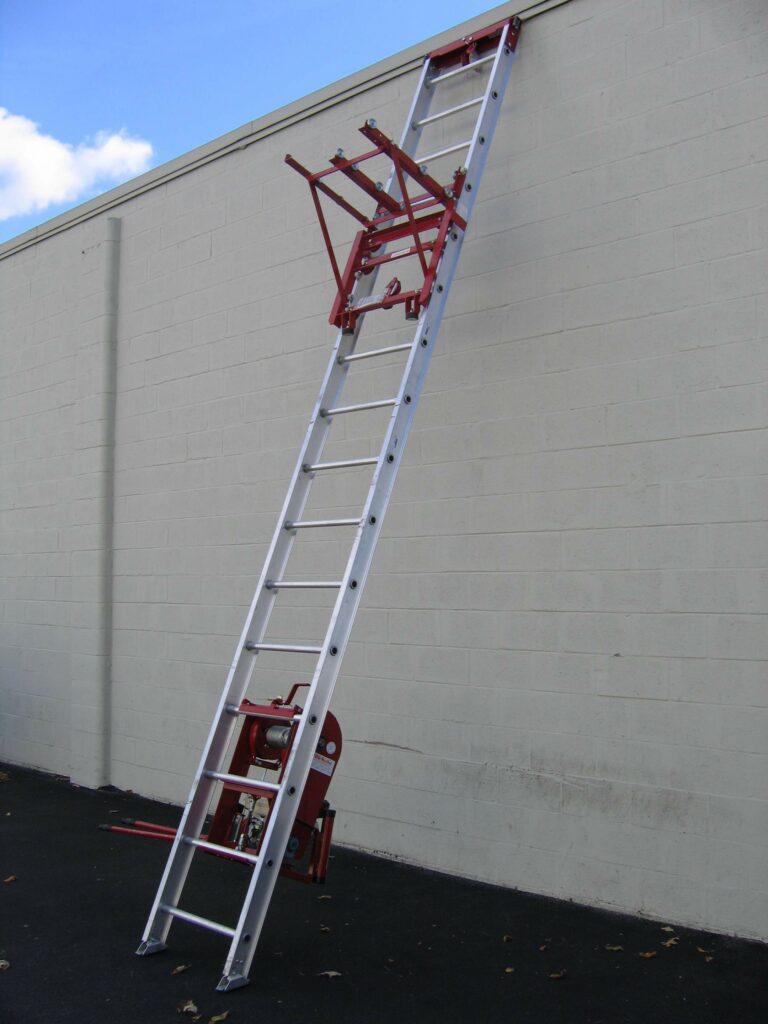
Hard Hat
A hard hat is a type of helmet predominantly used in workplace environments such as industrial or construction sites to protect the head from injury due to falling objects, impact with other objects, debris, rain, and electric shock. Suspension bands inside the helmet spread the helmet’s weight and the force of any impact over the top of the head. A suspension also provides space of approximately 30 mm between the helmet’s shell and the wearer’s head, so that if an object strikes the shell, the impact is less likely to be transmitted directly to the skull.
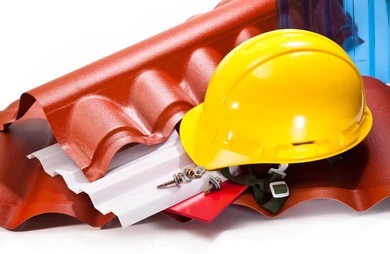
Conclusion
Your selection for roofing tools will depend upon the project requirements. Given above are different options that you can choose for your next roofing project.
Analysis of different types of roofing tools
Roofing nail guns
Heat guns
Automatic welders
Hammer tacker stapler
Roofing hammer
Roofing blade
Roofing shovel
Roofing scoop shovel
Pry bar
Chalk line tools
Caulk gun
Tin Snips
Reciprocating saw and circular saw
Sawhorses
Ladder Hoist
Hard Hat

